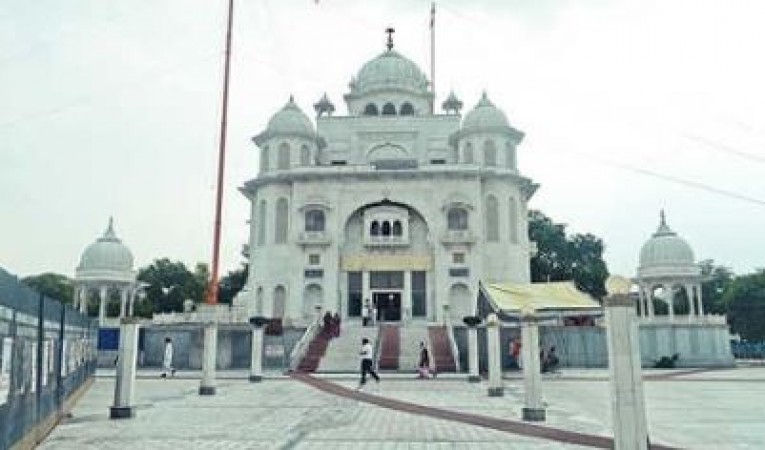
Gurudwara Rakab Ganj Sahib is historic Gurudwara situated in the Delhi. It holds immense historical and religious importance for Sikhs worldwide. With its serene ambiance, architectural grandeur, and spiritual significance, Gurudwara Rakab Ganj Sahib stands as a symbol of faith, resilience, and the rich Sikh heritage
Gurudwara Rakab Ganj Sahib's history dates back to a tragic event that occurred on March 30, 1783. This was the day when the ninth Sikh Guru, Sri Guru Tegh Bahadur Ji, sacrificed his life for the freedom of religion. He was executed by the Mughal emperor Aurangzeb in Delhi's Chandni Chowk area. After Guru Tegh Bahadur Ji's martyrdom, his body was clandestinely taken by his devoted follower, Bhai Lakhi Shah Banjara, and cremated at this site, now known as Gurudwara Rakab Ganj Sahib.
Also Read: Gurudwar Sri Panja Sahib: Hand Prints of Guru Nanak Dev Ji
The name "Rakab Ganj" refers to the incident where Bhai Lakhi Shah Banjara used his own pair of 'rakabs' or stirrups to suspend Guru Tegh Bahadur Ji's body and transport it to the cremation site. The word "Sahib" signifies the sacred nature of the shrine. This historic event serves as a powerful reminder of the supreme sacrifice made by Guru Tegh Bahadur Ji to uphold the principles of religious freedom and justice.
Gurudwara Rakab Ganj Sahib's architecture reflects the typical Sikh architectural style. It stands as a three-story building, with a dome on top and a flagpole bearing the Sikh flag, known as the Nishan Sahib. The exterior is adorned with beautiful white marble, while the interior features intricate woodwork, frescoes, and gilded decorations. The Darbar Sahib, the main hall of the Gurudwara, is where the sacred Guru Granth Sahib, the holy scripture of Sikhism, is placed on a raised platform.
Also Read: Gurudwara Sri Goindwal Sahib: Establishment Of The Manji System
The Gurudwara follows the principles of equality, selfless service, and communal harmony that are central to Sikhism. Every day, thousands of devotees from different backgrounds and faiths visit Gurudwara Rakab Ganj Sahib to seek solace, find spiritual enlightenment, and participate in community service. The Gurudwara offers langar, a free community meal, to all visitors, irrespective of their caste, creed, or social status. This practice of langar promotes equality, humility, and the eradication of hunger.
Gurudwara Rakab Ganj Sahib also plays an essential role in social welfare activities. It actively engages in various initiatives, including education, healthcare, and disaster relief. The Gurudwara runs educational institutions, providing quality education to children from economically disadvantaged backgrounds. Additionally, it operates medical clinics and organizes blood donation camps to cater to the healthcare needs of the community.
Also Read: Gurudwara Sri Tarn Taran: A Saving Boat
Gurudwara Rakab Ganj Sahib has witnessed its fair share of challenges and transformations throughout history. It has been rebuilt and renovated multiple times to preserve its sacredness and architectural beauty. Despite the numerous obstacles, it has remained an unwavering symbol of Sikh faith, resilience, and the pursuit of justice.
Gurudwara Rakab Ganj Sahib stands as a significant religious and historical landmark, representing the indomitable spirit of the Sikh community. With its rich history, captivating architecture, and commitment to social welfare, it continues to inspire millions of devotees and visitors from around the world. Gurudwara Rakab Ganj Sahib remains a sacred sanctuary where people can find solace, engage in selfless service, and experience the profound teachings of Sikhism.
Also Read: Gurudwara Sri Kartarpur Sahib: Birth Place Of Guru Nanak Dev Ji